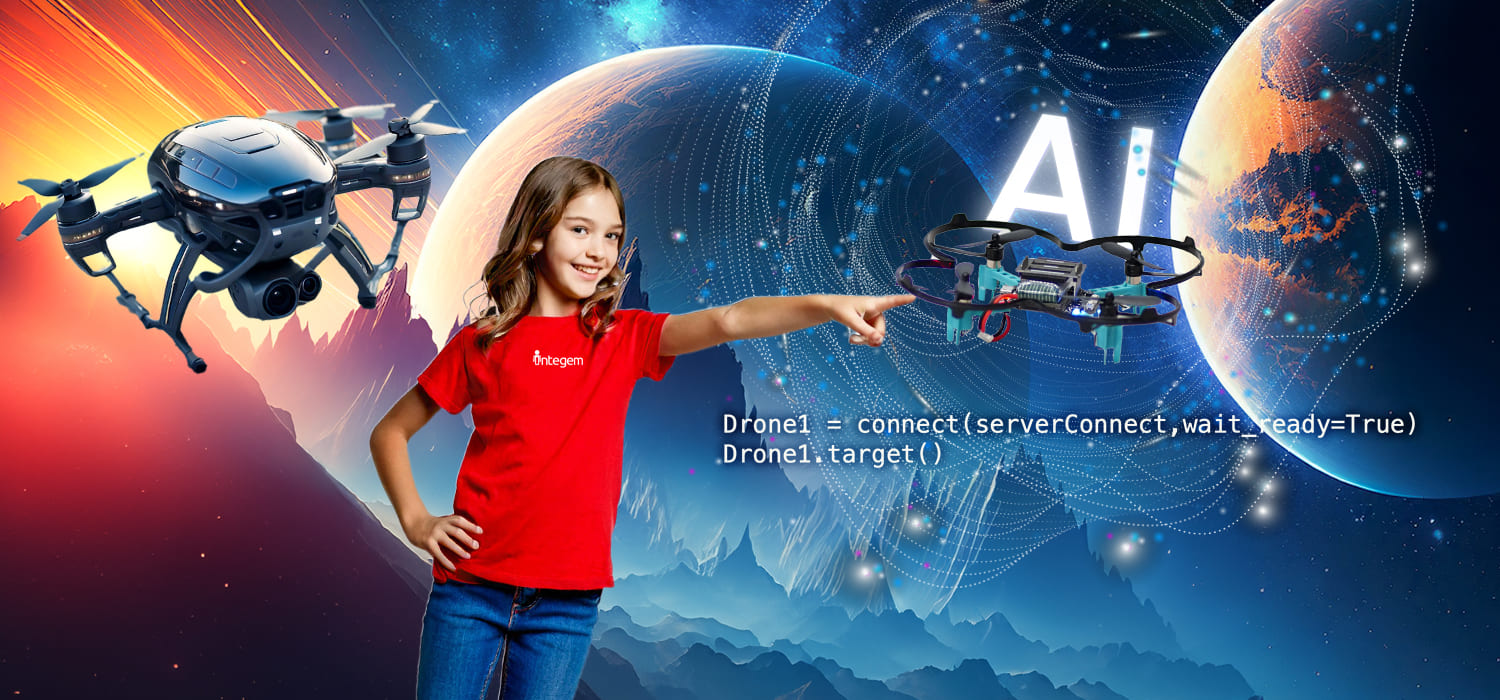
AI Space Drone Engineering: Build, Code & Explore for Teen
AGES: 10-14
LENGTH:2 weeks
DESCRIPTION
Teen drone enthusiasts (Ages 10-14) will embark on an exciting journey of exploration and innovation in the 2-Week AI Space Drone Camp. No prior knowledge in computer science or robotics is needed. And each student will work with their own robotics system in the camp.
This camp is fully accredited by the Accrediting Commission for Schools, Western Association of Schools and Colleges (ACS WASC).
Fun outdoor and indoor activities and plays are part of the camp experience.
Imagine this: Design AI space drones to autonomously survey uncharted terrains or capture breathtaking views from above while stepping into a Holographic Augmented Reality (AR) world. Students will integrate AI and drone engineering, creating innovative solutions that merge the physical and digital worlds.
Hardware Provided
Each student will work with the following hardware during the camp, with the option to purchase a kit for continued learning at home:
- Drone Kit (Week 1): A programmable drone.
- AI Space with Camera and Helium Balloon (Week 2): An AI module integrated with the drone, paired with a helium balloon to simulate a zero-gravity space environment, enabling autonomous navigation and intelligent decision-making using real-time data.
The camp's curriculum is designed to be engaging and inspiring with following modules
- Introduction to Drone Mechanics
- Basics of Aerodynamics for Drones
- Drone Motor Controls
- Python Coding for Drones
- Drone Programming & Debugging
- Introduction to AR Coding for Drone Control
- Introduction to AI
- Introduction to AI-Based Zero-gravity Space Drone Control
- Integration of AI and Camera for Autonomous Navigation
- Interactive AR Experience Design with AI and Drones
- Design Your Own AI Space Drone Application
What sets the 2-Week AI Space Drone Camp Apart?
This camp combines drone engineering, AI, and holographic AR to create a hands-on, multi-dimensional learning experience that advances traditional drone education.
- AI Integration in Drones: Students will explore how AI enhances drone capabilities, from autonomous navigation to performing specific tasks in simulated zero-gravity environments.
- Hands-on Learning with Advanced Equipment: The camp provides progressively more sophisticated hardware, ensuring practical experience with both drones and AI technology.
- Holographic AR for Immersive Control: Using Holographic AR, students can remotely operate their drones in simulated environments, enabling them to explore scenarios like space-like conditions or futuristic landscapes.
- Focus on Creative Problem-Solving and Innovation: Following the Stanford University Design School curriculum, students will apply design thinking to develop AI drone control applications, encouraging creativity and iterative learning.
Students will learn the following:
- Introduction to AI (Teen Level)
- AI-Based Drone Design and Control (Teen Level)
- Beginning to Intermediate Drone Engineering (Teen Level)
- Beginning to Intermediate Drone Coding (Teen Level)
- Python Programming (Teen Level)
- Intermediate Holographic AR Design and Logic (Teen Level)
- UI/UX Design (Teen Level)
- Interactive Storytelling for Drone Applications (Teen Level)
- Debugging and Problem-Solving (Teen Level)
- Design Thinking process based on Stanford University Design School curriculum (Teen Level)
********************
Safety and FAA Compliance
The Federal Aviation Administration (FAA) regulates all U.S. airspace to ensure safe and lawful operations, including activities involving drones and space balloons. To provide a safe and structured learning environment, we combine FAA regulations with additional safety measures tailored for our program.
Why This Matters
- FAA Rules: Govern activities like space balloon launches to avoid interference with air traffic and ensure safe operations.
- Our Safety Guidelines: Protect students, equipment, and the learning environment, addressing specific risks associated with drones and space technology.
- Responsible Learning: Students develop real-world skills by learning to follow safety protocols and regulations essential in aerospace fields.
How Students Comply
- Designated Drone Areas: Drones are flown only in approved areas to ensure safety and prevent damage.
- Supervised Space Balloon Launches: These occur only on FAA-approved dates, times, and locations under teacher supervision, considering weather and air traffic conditions.
- Controlled Space Drone Use: Space drones are not released into the atmosphere and are operated only in controlled settings.
- Safety Protocols: Students follow all instructions and handle equipment responsibly to minimize risks.
By adhering to these rules, students gain hands-on experience in a secure environment while exploring the exciting world of drones and space technology.
